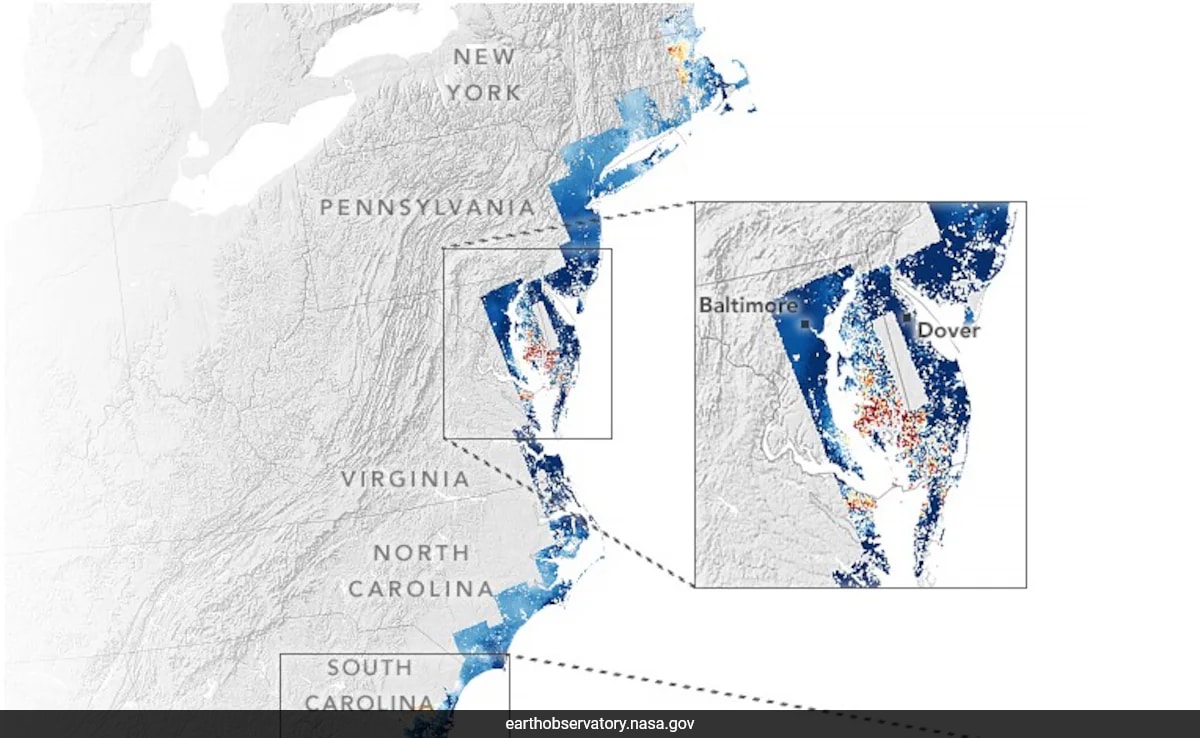
NASA images reveal the extent to which the coast is collapsing.
The US East Coast faces a double whammy from water, according to NASA. Rising sea levels are already a concern, but new research reveals the land itself is sinking, adding another layer of vulnerability to major cities like New York, Baltimore, and Norfolk.
Using satellite data and GPS sensors, scientists at Virginia Tech’s Earth Observation and Innovation Lab discovered that parts of the coastline are subsiding by 1 to 2 millimeters per year between 2007 and 2020. While that may seem small, it compounds the threat posed by rising sea levels, potentially putting critical infrastructure and millions of residents at greater risk of flooding and coastal hazards.
This study highlights the complex challenges facing coastal communities as they grapple with the impacts of climate change. Addressing both rising seas and land subsidence will require comprehensive adaptation strategies to ensure the long-term resilience of these regions.

The encroachment of saltwater and land subsidence has led to the displacement of forests, impacting not only wildlife but also human structures. Along the coast, around 897,000 structures, including highways and airports, are situated on land experiencing subsidence.
The findings follow a previous study from the EOI Lab, published in Nature Communications, that used the same data to show that most East Coast marshes and wetlands-critical for protecting many cities from storm surge during hurricanes-were sinking at rates exceeding 3 millimeters per year. They found that at least 8 percent of coastal forests had been displaced due to subsidence and saltwater intrusion, leading to a proliferation of “ghost forests.”
“Subsidence is a pernicious, highly localized, and often overlooked problem in comparison to global sea level rise, but it’s a major factor that explains why water levels are rising in many parts of the eastern US,” said Leonard Ohenhen, a geophysicist at Virginia Tech. The consequences for people living along the coast include more “clear sky” tidal flooding, more damaged homes and infrastructure, and more problems with saltwater intruding into farmland and fresh water supplies.




